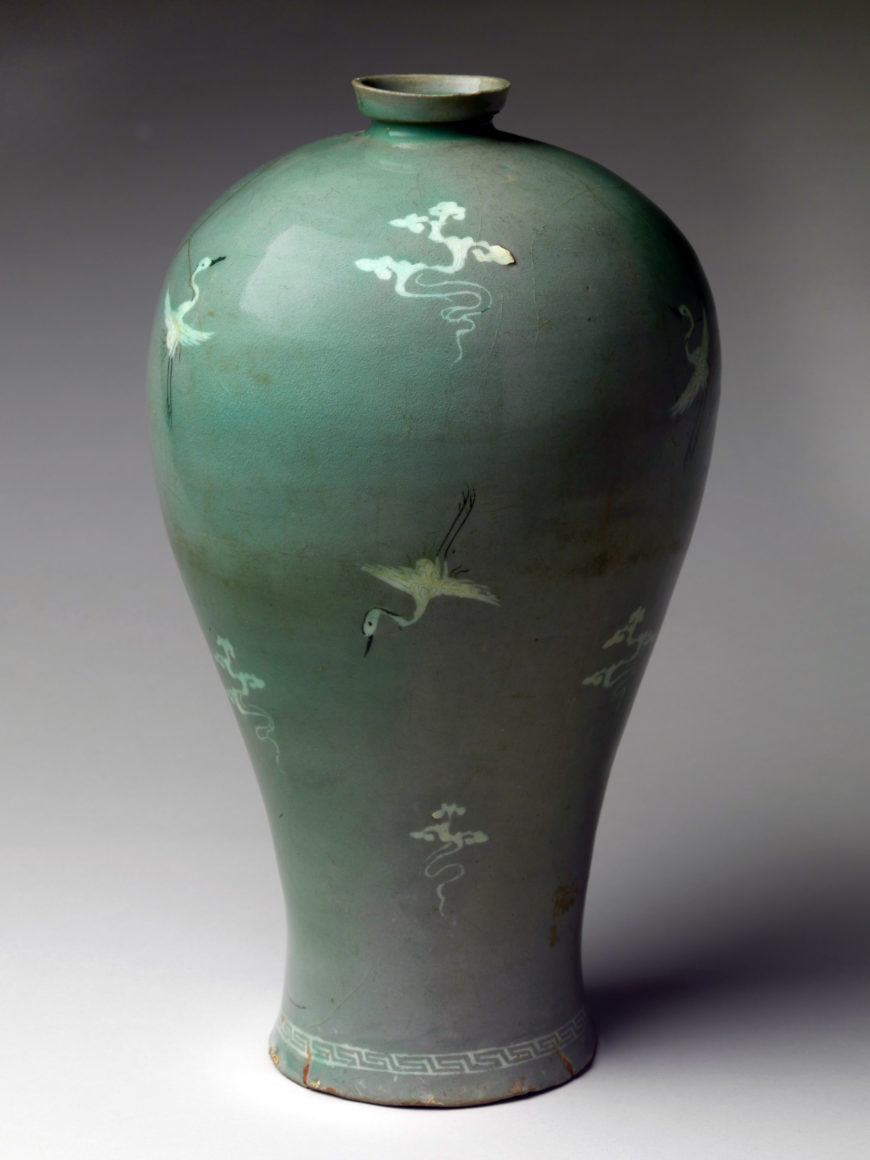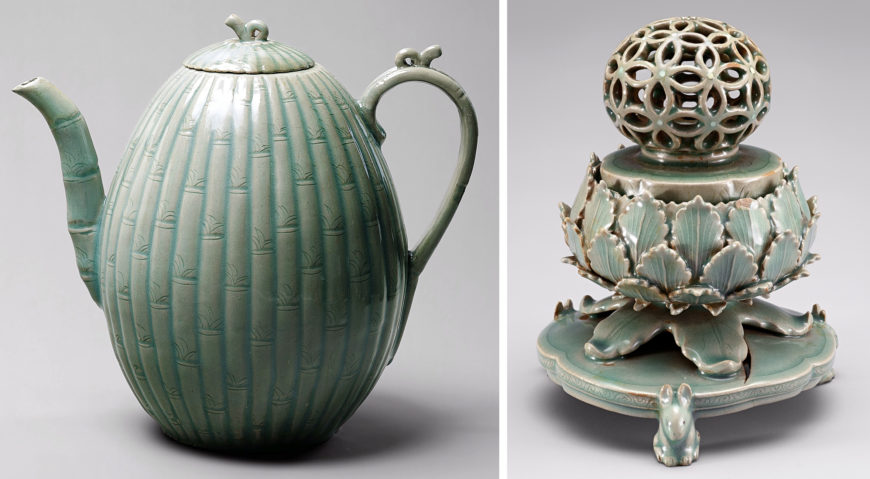Celadons

Maebyŏng decorated with cranes and clouds, Korea, Goryeo Dynasty, first half of the 12th century, stoneware with inlaid decoration under celadon glaze, H. 33.7 cm; D. 19.1 cm (The Metropolitan Museum of Art)
For my first blog post of week nine, I decided to go with some ceramic pottery from the Goryeo Dynasty. This specific piece dates back during the ruling of the Goryeo Dynasty between 918-1392. These specific pieces played a very significant role in this dynasty during those times. The main reason why these were so significant was because they were highly sought after which caused them to be heavily exported. This was very important to the dynasty because it brought economic growth and a sense of power to this society. These Korean potters adapted and refined the Celadon technology from china to help them create very distinctive Korean ceramics. These celadons are works of ceramic that have a very distinctive green to blueish glaze on them. The color and the intricate inlaid ornamentations are the specific parts that has made the Goryeo celadons such recognizable objects for centuries. It is really interesting in the fact that these celadons weren’t all the same style of pottery. When you think of famous pottery, most of the time the artist or generation has a style or pattern that you can pull out but the Goryeo’s do not match that. The Goryeo’s did all sorts of styles including jars, bowls, cups, vases, and much more. Each of these pieces had very intricate details and decorative techniques that contribute to the utter uniqueness of these Korean works of art.
Not only did their works of art set them apart from the rest of the world but their technology and techniques were far more advanced than anyone else. According to smarthistory, “Archaeological evidence shows that Korean ceramic technology was advanced even before the Goryeo Dynasty. Korean stoneware from the Three Kingdoms Period (57 B.C.E.–676 C.E.) was fired at temperatures of 1000°C or higher, making it the earliest example of high-fired ceramics in the entire world.” This is absolutely jaw dropping because it is a huge example of humans using innovation dated hundreds of years ago. It is also stated that the Koreans modified a lot of the different techniques the Chinese used to produce their own style of celadons. These pieces are so remarkable and rare that most of the ones found in museums have been pulled from Korean tombs.

Left: Melon-shaped ewer with bamboo decoration, Korea, Goryeo Dynasty, first half of the 12th century, Stoneware with carved and incised design under celadon glaze, H. 21.6 cm (The Metropolitan Museum of Art); right: Incense burner, Celadon with openwork geometric design, Korea, Goryeo Dynasty, 12th century, Stoneware with celadon glaze, H. 15.3 cm (National Museum of Korea)
Smart History Link: https://smarthistory.org/korean-celadons-goryeo/
Jung, Sol, and Sol Jung. “Korean Celadons of the Goryeo Dynasty.” Smarthistory, smarthistory.org/korean-celadons-goryeo/.

Right away I just want to comment on how beautiful these pieces are I am absolutely blown away by how they look and amazed at how advanced the Koreans were in their time for making these. Also the glaze of the ceramics adds to their beauty and I'm not surprised at all by the fact that these are essentially treasures to find. Well done!
ReplyDeleteI based one of my blog posts on Korean Celadon ware as well because personally, they’re inspirational. They make me want to attempt a piece with such feats. The amount of time and effort clearly put into one piece is admirable. The incense burner, specifically- so detailed. I also know how difficult it can be to get such an even glazed coat.
ReplyDelete